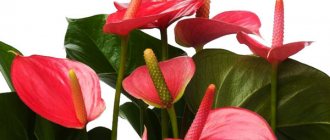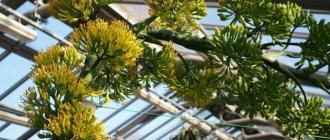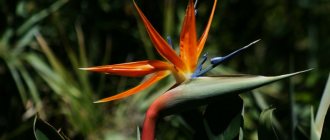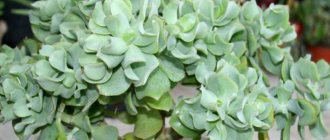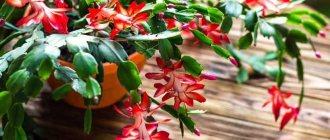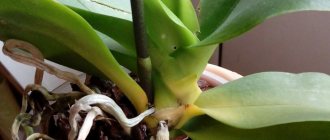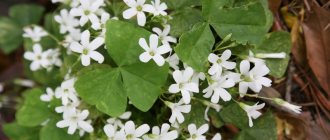- March 24, 2019
- Flowers
- Natali Michaelis
Heliotrope is a herbaceous perennial plant that came to Russia several centuries ago. Lovers of indoor flowers especially appreciate it for its subtle aroma and decorative appearance. Caring for and planting Marin heliotrope (photos will be given in the article) is not overly complicated, so even an inexperienced gardener can cope with the task of growing it. Read about all the nuances that a flora lover will encounter in our article.
Features of the variety and description
Heliotrope Marin is a tree-like shrub, the height of which often reaches half a meter. The leaves are arranged alternately on short cuttings, which is why the crop has a rather lush shape. Small flowers of rich blue-violet color are collected in inflorescences in the form of corymbs. The plant is also characterized by the presence of fruits, which consist of four parts - nuts. These parts can contain up to one and a half thousand seeds, the total weight of which is only 1 gram.
The first flowering of indoor crops can occur in the same year as sowing. The buds begin to set in early June and open after about a week. With proper care, the flowering period lasts until the cold weather. Perhaps it is precisely because of this that the perennial heliotrope Marin is so loved by gardeners. However, without proper care, the plant may die, so let's look at the basic rules for growing it.
Growth conditions and types of reproduction
In the practice of floriculture, heliotropes were grown for quite a long time by cuttings, which made it possible to preserve the decorative features of the mother plant. Until recently, the use of seeds was considered to be of little effectiveness, especially considering the long growing season of this crop. So, from the moment of sowing until the emergence of seedlings, about twenty-five days pass, and after germination and before the start of flowering - up to one hundred days. Thus, without appropriate additional lighting and the creation of greenhouse conditions, it is quite difficult to grow heliotrope from seeds, even using rapidly developing varieties.
On the other hand, the seed propagation method, subject to growth conditions, is the most accessible.
Light soils are suitable for planting heliotrope; for example, you can take a classic soil mixture for indoor flowers or mix peat (four parts) and river sand (one part).
The optimal temperature for seedling growth is about twenty-two degrees Celsius. For an adult plant, the average daily temperature should be about twenty degrees Celsius.
Choose a site in the garden that is well lit, but with variable shade, since direct rays of the sun can negatively affect the decorative effect of the flower.
Choosing a landing site
Heliotrope Marin is very demanding in terms of lighting, so it is worth choosing a place that is illuminated by the sun most of the day. The best option for growing is a terrace or balcony with large windows. Also, all heliotropes can be grown outside in flower beds. They are often used to form borders, which not only look very impressive, but also smell pleasant. However, when planting in open ground, it is recommended to protect the area from rain and strong winds. It is best to plant the plant under polycarbonate canopies, avoiding places near the corners of buildings, as they often experience strong drafts.
Planting seedlings in open ground
Planting heliotrope Marina in open ground should be done in the spring, as soon as the night frosts stop. Try to do this before the end of May, otherwise the plant will devote most of its energy not to rooting, but to the formation of buds. If the plant needs to be planted in summer or autumn, then you will first need to trim off all opened and unopened flowers.
It is also recommended to prepare seedlings for planting in open ground. To do this, the pot with the flower must be taken outside at night for several days. The hardening procedure will speed up the rooting process, but it is only allowed if the likelihood of sudden night and morning frosts is minimized.
When planting, you should maintain a distance of 20-30 centimeters between neighboring seedlings. It is also strongly recommended to place humus or leaves in the holes. This will allow you to enrich the soil with organic matter and not have to worry about fertilizing for the first year. In the first week after planting, the soil must be moistened daily by spraying, since watering from a watering can can harm the roots.
Reproduction
At first , heliotropes were propagated exclusively by cuttings. With the development of selection, varieties appeared whose propagation became possible not only by cuttings, but also by seeds. Among them is heliotrope “Marin”.
Cuttings . The mother plant is carefully dug out of the soil with a lump of earth, placed in a container and brought into a warm room to overwinter.
be watered as the soil dries out. In February (in the middle of the month) cuttings are made from it. Each shoot should have 3 or 4 internodes. There is no need to leave a lot of leaves on the shoot: this will weaken it.
Sand and humus are poured into the boxes Before planting the cuttings, they are kept in a special composition for root formation.
After planting in the substrate, the shoots are covered with film and wait for the roots to appear, watering the cuttings daily and ventilating them for half an hour, opening the film. Typically, it takes 3 weeks for roots to form. Then the cuttings are transplanted into soil that is more nutritious in composition: peat, turf and sand in a ratio of 4: 2: 1.
The soil is fertilized with a complex fertilizer containing minerals. For the first week, young plants should not be exposed to direct sunlight; they should be sprayed with water at a temperature slightly above room temperature 2 times a day.
To make future bushes compact, seedlings are repeatedly pinched as they grow. They are planted in open ground after the end of frost in the spring, leaving a distance of 20 centimeters between plants.
Seeds . Planting months: January, February, March. To grow seedlings, Russian seed producers recommend scattering heliotrope seeds over the surface of the ground, pressing them in, but not covering them with anything. European manufacturers recommend covering scattered seeds with a 3-mm layer of soil.
The germination period is up to 20 days. The boxes should be kept warm and illuminated, since light is necessary for seed germination. After 37 days, the sprouts are distributed into separate containers and the containers are placed in a cooler room with ventilation.
The plant will be bushy if you pinch out the shoots as they grow.
Caring for an adult plant
Judging by the reviews, Marin heliotrope is a fairly unpretentious crop only in the adult phase. If you manage to keep the plant in good health for a year after planting, then further care for it will not be difficult. It will be enough to moisten the soil in a timely manner, take care of additional shading on hot summer days, cover the flower for the winter and fertilize the soil with organic and mineral fertilizers. We will examine all these nuances in more detail in the following sections.
Watering
Adult heliotrope Marin (photo below) does not require frequent watering. It is worth noting that the plant tolerates drought much easier than excess moisture. Even on summer days, various fungal infections can occur in the ground, affecting the root system of the plant, so you should water the heliotrope only when a dry crust, at least two centimeters thick, appears on the soil around it. Water is poured under the root using a watering can with a rain nozzle. It is strongly recommended to avoid getting the buds wet in hot weather.
As for a houseplant, watering will not be much different from a soil crop. It is necessary to monitor the condition of the substrate in the pot and water the flower only when a dry crust forms on top. You can use a wooden stick or your finger to test the moisture. Also, you should not allow moisture to remain in the pan, as this can provoke the development of various diseases. It is also recommended to place a drainage layer consisting of broken bricks or stones at the bottom of the pot when replanting, so that air can easily penetrate to the roots.
Heliotrope flower: description of popular plant species and options for use in garden design
Semi-shrubs and herbaceous perennial plants do not require special care. The decorative crop has obovate, alternately arranged foliage of dark green color. Leaves with pubescence, wavy or wrinkled type, are located on fairly short petioles.
The flowers are small, fragrant, purple or dark blue in color, collected in dense corymbose inflorescences. In indoor floriculture, heliotropes can grow for several years, but in garden culture they are grown as a flowering, highly decorative annual. After flowering, fruits full of seeds are formed. Hybrid heliotrope is especially popular.
G. thyroid or thyroid
The tallest decorative species. The height of an adult plant reaches 120 cm. The above-ground part is represented by well-shaped stems and long, lanceolate, boat-shaped leaves. The outer part of the leaf blade has a slightly darker color. The flowering is beautiful and long-lasting, with blue or blue flowers collected in inflorescences up to 8-10 cm long. The culture is widely used as a background for creating multi-tiered flower beds, and is also suitable for group and single plantings.
G. peruvian
Peruvian or Tree-like is one of the most common species in culture , and is a spreading bush with a height of the above-ground part of up to 40-60 cm. Fragrant and beautiful flowers of dark purple or rich bright blue color are collected in relatively large inflorescences that bloom before frost. The most popular hybrid forms include the “Marin” series. It is often used in group flower arrangements and single plantings when decorating the landscape of a personal garden.
G. Kurasavsky
The species is a spreading, rather tall shrub. The diameter of the above-ground part is often 110-120 cm, with an average height of no more than 60-100 cm. The flowers are pale bluish-white, collected in inflorescences with a strong and long peduncle. The plant combines well with conifers and decorative deciduous perennials.
G. stem-encompassing
The shortest species, not particularly popular among amateur gardeners. The ornamental plant is distinguished by long lanceolate leaves with characteristic wavy edges and attractive purple flowers. In landscaping it is used as a carpet plant and planted to decorate borders and flower beds. Serves as an excellent complement to salvia, tuberous begonia and garden petunia.
G. European
The perennial species “European” is characterized by a bush-like form with a height of the above-ground part of up to 35-40 cm. The foliage is greenish-yellow in color. The flowers are distinguished by original curls and a white corolla. They are located in the axils of the upper leaves. During the active flowering phase, the entire plant is covered with lush and dense inflorescences.
Top dressing
If we are talking about a houseplant, then the first feeding should be carried out 12 days after transplanting the flower from the transport pot. After this, the procedure is repeated annually two weeks after the start of mass flowering. Remember that a lack of nutrition does not affect the health of a plant as much as its excess. Even the slightest error in proportions can lead to the death of the flower.
As for the ground plant, the initial feeding in the form of humus should be enough for a whole year. In the future, it is necessary to fertilize the soil with special organic and mineral fertilizers, which can be purchased at any flower shop. An alternative option is cow manure diluted in rainwater in a ratio of 1:10.
Features of flowering
Any of the species of this plant has dark green pubescent leaves that are alternate and obovate in shape. Short-petioled leaves may be wrinkled or wavy. Small fragrant flowers are dark blue or purple, and they are collected in fluffy shields. These flowers contain valuable essential oil, and it is this oil that is still widely used in the perfume industry. However, it should be taken into account that there are species whose shoots contain a poisonous alkaloid called cynoglossin, while the seeds contain lasiocarpine. These substances have a paralyzing effect on the central nervous system of the human body, as well as animals. However, as a rule, such species are not grown as garden crops.
Each peduncle blooms for approximately 4 weeks. After flowering, fruits (coenobium) are formed, which, after ripening, are divided into 4 parts (erema). Each part contains small plant seeds. In favorable climatic conditions, heliotrope is grown as a perennial, but in mid-latitudes with frosty winters it is grown as an annual.
Common diseases
Most often, plants grown in open ground conditions are subject to such misfortunes. Most diseases are directly related to improper plant care, for example, excessive watering. If a flower is affected by root rot, it will be almost impossible to save it. The only option is to cut off the affected roots of the flower and replant it in a new location.
You should also be wary of the appearance of brown spots on the leaves - a clear sign of powdery mildew. The development of the disease is provoked by cold drops of rain or morning dew, which do not dry out for a long time. You can get rid of the disease using the drug “Fitosparin” by spraying the leaf or applying the solution at the root.
Heliotrope Sea Breeze: growing from seeds
Before planting seeds, it is recommended to steam the soil with boiling water. This is done in order to prevent fungal diseases that may appear as a result of early sowing, since the duration of daylight hours during this period is still very short.
- Pour the slightly moistened soil mixture into a container and compact it with a plank.
- Scatter the seeds evenly on the surface and lightly dust them with soil (1-2 mm layer). This method of sowing will protect the seeds from drying out.
- Water in small portions until the soil is completely saturated with water.
- Place the containers in a plastic greenhouse or container and put them in a warm place. The temperature must be at least +18−20 °C.
- When seedlings appear, remove the bowls with the crops from the container and place them on the windowsill. The optimal temperature for seedling development is +20−22 °C.
Heliotrope seeds germinate within 5-20 days , in rare cases - up to 28 days. But still, if after 21 days the shoots have not appeared, it is better to repeat the sowing. Heliotrope tolerates lack of light well, but it is still better not to plant it on northern and shaded window sills.
Heliotrope pick
The plant is picked after the appearance of two true leaves. Each seedling must be planted in individual 9*9 cm containers. The soil mixture can be the same as that used for sowing.
If necessary, the roots should first be untangled with a toothpick so that they are located evenly in the ground without bending.
Water the seedlings, and 14 days after picking, it is recommended to apply any fertilizer for seedlings, strictly following the instructions on the package.
List of pests
Houseplants are rarely affected by pests. Most often this happens after a diseased plant is brought into the house. Insects move from one flower to another and begin to reproduce in a new environment. In this case, you should immediately create a quarantine zone for diseased plants in a separate room and begin a “course of treatment.” Here is a list of the most common pests and how to combat them:
- aphids - repeated treatment with any insecticidal preparation;
- spider mite - covering a flower with a bag of cigarette smoke;
- whitefly - treating flower leaves with green soap.
If the soil crop has been affected by pests, then it will be possible to cope with the scourge exclusively with insecticidal agents. Moreover, the treatment should be carried out on a windless day at sunset or dawn, so that the substance remains on the parts of the plant for as long as possible. Various folk remedies for controlling insects in open ground will most likely be useless, but they can be combined with chemical treatment.
Seed planting technology
Unlike other varieties, heliotrope Marin can only be propagated generatively. Cuttings and dividing the bush will not bring absolutely any results. Therefore, let's look at the main stages of growing Marin heliotrope from seeds.
- We prepare the ground. To do this, it will be enough to purchase a ready-made substrate for heliotropes at a flower shop. It is highly not recommended to prepare the soil yourself, since the flower is very picky about its composition.
- Plant the seeds in cups. In this case, you should not bury the seed more than 5 millimeters from the surface. Otherwise, the sprouts simply will not have enough strength to break through the soil layer.
- We're making a greenhouse. After watering the substrate, it is recommended to additionally cover the cups with polyethylene or glass to create a greenhouse effect (do not forget about daily ventilation).
The percentage of germination directly depends on the quality of the seed, but the first shoots, as a rule, appear a month or two after planting. Further care is no different from the rules described above.
Growing conditions
Lighting
The flower loves good lighting, but in direct sunlight the petals quickly fade. Heliotrope is best planted in lacy shade.
Soil requirements
Fertile, moisture-absorbing, neutral or slightly acidic. To grow heliotrope indoors, buy ready-made soil for home flowers or a mixture for tomato seedlings.
To place it in the garden, prepare a substrate by mixing peat, humus, sand and turf soil.
Compatibility with other plants
In order for Marin heliotrope to feel as comfortable as possible in the open ground, it is necessary to follow the basic rules of the neighborhood. It is highly not recommended to plant the flower in areas where there are large trees, as they create unnecessary shading. But climbing roses or marigolds will be excellent neighbors for heliotrope, since they not only do not interfere with its normal growth, but also harmoniously combine with its appearance and aroma. You can also add garden geranium or petunia to the flowerbed to dilute the dazzling purple tone of heliotropes with another color. Wormwood and lavender can also help with this. However, do not forget that if one plant is damaged by pests, the insects will spread to neighboring plants.
How to collect heliotrope seeds at home
Shortly before the end of flowering, seed pods form on the shoots of heliotrope. At first their color is green, then the fruits turn brown and turn black. Darkening indicates that the seeds are ripening and that the capsule will soon open.
To collect material for planting and growing, dried inflorescences must be cut off. The darkened fruits are transferred into the house and opened over a sheet of paper. The spilled seeds are dried for several more days in a warm room with good ventilation. Then the grains are transferred to a paper bag and stored in a dark place until planting.
It must be taken into account that only simple varieties of flowers can be grown from seeds collected with one’s own hands. Rare hybrids are best propagated by vegetative methods or purchased grains from the manufacturer. Shoots obtained from seeds collected in a flowerbed will not retain unique varietal characteristics.
Main problems when growing
In order to prevent the main mistakes that novice gardeners make when growing, we recommend that you familiarize yourself with the list of the main problems that arise most often when growing this flower.
- Withering of buds. A similar problem most often occurs after rain, since drops fall inside the inflorescence and remain there for quite a long time. If you want to avoid such a development of events on your site, then take care in advance to protect your plants from rain, for example, build a canopy from film or polycarbonate.
- Excessive spreading of bushes. A fairly common occurrence in the flowerbeds of novice gardeners. To form the volume of the plant, it is necessary to regularly tie up young branches using slats and nylon thread. Also, do not be afraid to trim off an excess shoot if it does not fit into the decorative appearance of the bush.
- Dry tips of leaves. A clear indicator of a lack of moisture in the soil, which most often manifests itself in the summer. It is recommended not only to water the crop in a timely manner, but also to take care of a source of additional shading. For example, you can use garden netting.
As you can see, growing heliotrope at home is not difficult if you know the basic rules for caring for this flower. If you follow the recommendations given above, the plant will definitely delight you with its decorative appearance and enchanting aroma.
Description of heliotrope Marine
The homeland of heliotrope is South America. In tropical and subtropical climates, the flower can delight its owners for many years. However, heliotrope is not able to survive the winter in the temperate continental climate zone, therefore in Russia the crop is grown mainly as an annual one.
A distinctive feature of the Marine variety is its rapid pace of development, allowing the plant to bloom in the first year after sowing
Heliotrope Peruvian Marin has a tree-like form and reaches 50 cm in height. In warm climates, the plant can grow up to 65-70 cm. The leaves are alternate with a wrinkled surface. Heliotrope Marin is distinguished by lush inflorescences that exude a subtle vanilla aroma. The culture is very unpretentious, but many gardeners have difficulties when propagating by seed.
Features of flowering
Marin heliotrope flowers have a corymbose shape and include many buds. Reach 20 cm in diameter. They have a bright violet-blue color. Flowering of Marin heliotrope begins a few months after planting the seeds. The first buds appear in June. Flowering is quite long and ends with the onset of frost.
The Marine variety is considered light-loving, but the scorching sun can cause the buds to burn out
Application in landscape design
Heliotrope Marin (pictured) is suitable for growing both in flower beds and at home. The optimal places for a flower are loggias, balconies and terraces. Decorative heliotrope Marin can be used to form flower beds and mixborders. Since indoor conditions are considered more preferable for the crop, it is much more common on window sills and balconies than in garden plots.
Pots must be placed on the sunny side, as Marin heliotrope prefers an abundance of light and warmth

